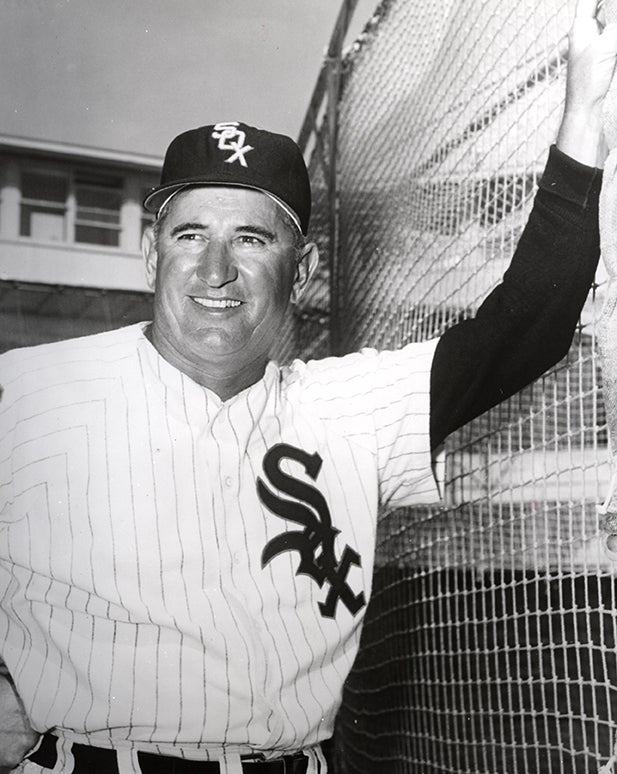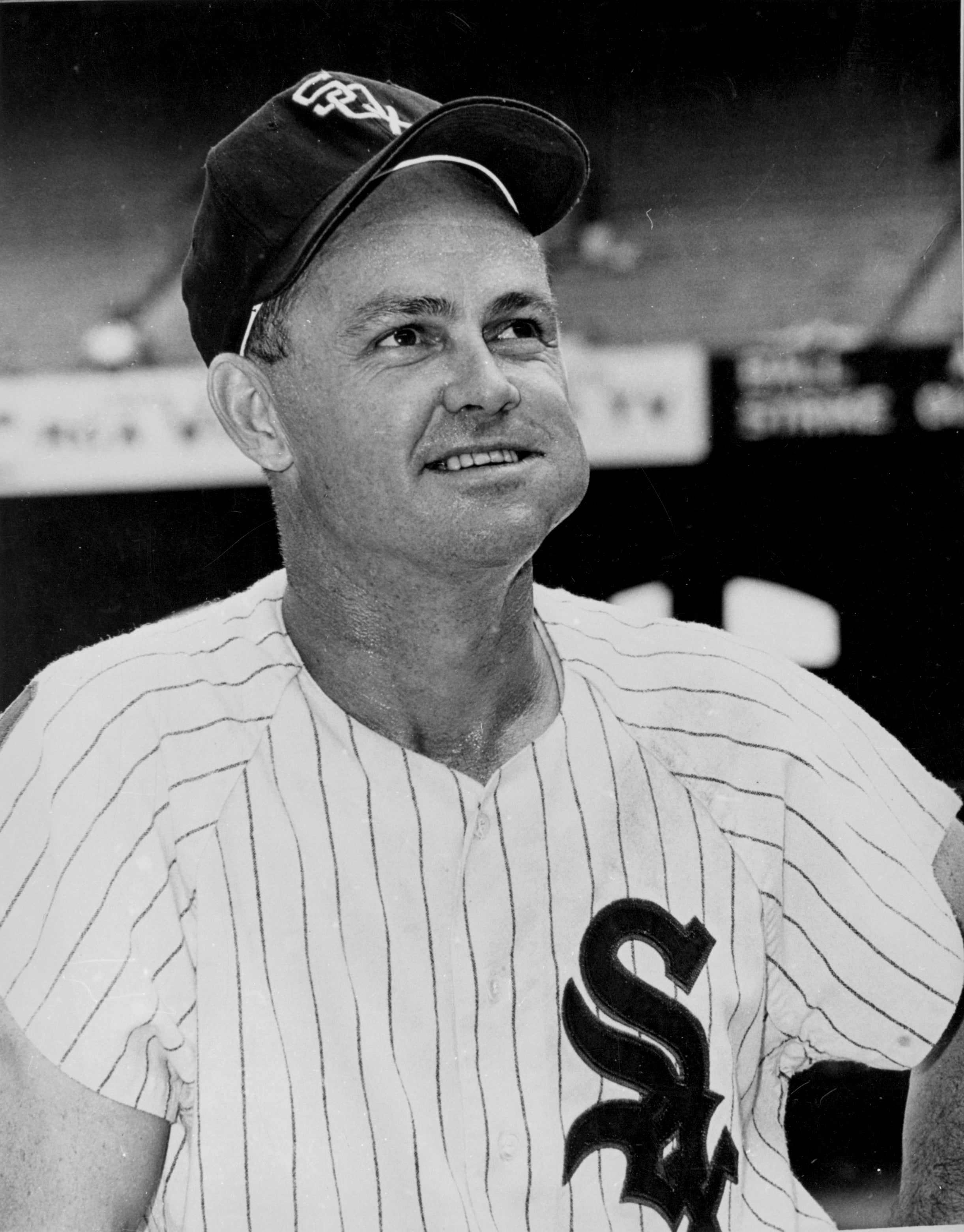He may be forty-three, but he has a young arm. There’s no end in sight for him. He may be around a long time yet.
- Home
- Our Stories
- Cubs trade Hoyt Wilhelm to Braves for Hal Breeden
Cubs trade Hoyt Wilhelm to Braves for Hal Breeden
Hoyt Wilhelm was not one to follow the status quo. When he made his debut for the New York Giants in 1952 at the age of 29, manager Leo Durocher used the 6-foot right-hander solely as a reliever, rather than a starter – during an era in which the relief role was just starting to find its place in the game.
“The bullpen, that’s where they usually put old men,” he told the Philadelphia Daily News. “I’d have been happy to make the team as a water boy.”
Even more unconventional, was that Wilhelm relied primarily on the knuckleball, a slower-speed pitch that darts toward the plate on the whims of air currents. It was so unpredictable, that sometimes he himself didn’t know where it would go.
But Wilhelm was resourceful; he knew what his skills were, and put a tremendous amount of work into honing them.
“I got to messing with the (knuckleball) in high school,” Wilhelm said. “I started to see that the ball was doing something. I figured it was my only ticket to the big leagues, ‘cause I couldn’t throw hard, and I knew if I was going to play ball, I’d have to make it some other way.”
Emulating Dutch Leonard, a knuckleballer who pitched mainly for the Washington Senators, Wilhelm rode that pitch all the way through a 21-year long big league career, which he would conclude at 49 years of age.
The right-hander was a physical anomaly of sorts – as he got older, his pitching seemed to improve. From 1963-1967, his ERA dipped from 2.64, to 1.99, 1.81, 1.66, 1.31. The latter would be lowest ERA Wilhelm would ever record, and he would do it at 44 years old.
“He may be forty-three, but he has a young arm,” said his then- Chicago White Sox manager Eddie Stanky. “There’s no end in sight for him. He may be around a long time yet.”
From 1963-1967, Hoyt Wilhelm's ERA dipped from 2.64, to 1.99, 1.81, 1.66, 1.31. The latter would be the lowest ERA Wilhelm would ever record. (National Baseball Hall of Fame)
Share this image:
But as “Old Sarge” got older, teams grew wary about his ability to keep pitching. His numbers were impressive, but it almost seemed too good to be true. As a result, teams essentially started playing hot potato with him – more than willing to utilize the knuckleballer for the short-term, but unwilling to commit to a multi-year contract.
On Nov. 30, 1970, when Wilhelm was 48, he was traded to the Atlanta Braves in exchange for first baseman Hal Breeden. At the time, Wilhelm was the oldest player to have ever been traded in the history of the game. Breeden, who the Associated Press said “will have a shot at being successor to Ernie Banks,” had just finished an impressive year in the International League in which he hit 37 home runs and 116 RBI. He was also 21 years younger than Wilhelm.
Wilhelm had been dealt to the Cubs by the Braves for cash with 10 games left in the regular season, making only three pitching appearances in their race for the National League east title. It was as if he had been loaned to Chicago, and now the Braves were asking for their loan to be returned.
But none of this phased Wilhelm, who would pitch in the big leagues for two more years. He would post a 2.52 ERA in 21 seasons of MLB play, as well as 143 wins – 19 of them as a starter, and 124 in relief. He recorded 227 saves, and was the first pitcher to pass the 1,000-game mark, finishing up his career with 1,070. On top of all that, Wilhelm would be the first reliever to be enshrined in Cooperstown, in 1985.
“I just hope that when the time comes that he’s eligible for the Hall of Fame that the new breed sports writers will be able to look farther than the ends of their noses,” said Stanky of Wilhelm. “What this man is doing now is just a token of greatness. He’s been a tremendous pitcher ever since he joined the Giants in 1952 and Leo (Durocher) made a relief star out of him.”
Alex Coffey was the communications specialist at the National Baseball Hall of Fame
Related Stories

Phil Niekro elected to Hall of Fame

Lou Brock and Hoyt Wilhelm elected to the Hall of Fame

Future HOFer Al López named manager of Chicago White Sox

White Sox second baseman Nellie Fox named '59 AL MVP

Phil Niekro elected to Hall of Fame

Lou Brock and Hoyt Wilhelm elected to the Hall of Fame

Future HOFer Al López named manager of Chicago White Sox

White Sox second baseman Nellie Fox named '59 AL MVP
Mentioned Hall of Famers
Related Stories
Baseball Writers’ Association of America 2017 Hall of Fame Ballot Announced

Cubs trade Hoyt Wilhelm to Braves for Hal Breeden

Ford breaks Ruth’s World Series scoreless innings streak

"K" as in Cain
All-Stars Abound Memorial Day Weekend at Baseball Hall of Fame Classic

Tom Seaver strikes out 10 straight Padres

Harmon Killebrew Hits His 500th Career Home Run

1955 Hall of Fame Game
Hall of Famer Carlton Fisk Featured in Nov. 7 Voices of the Game event as Museum Unveils Whole New Ballgame Exhibit
01.01.2023
















